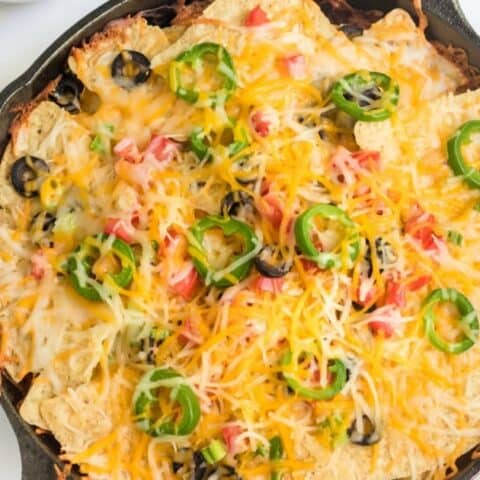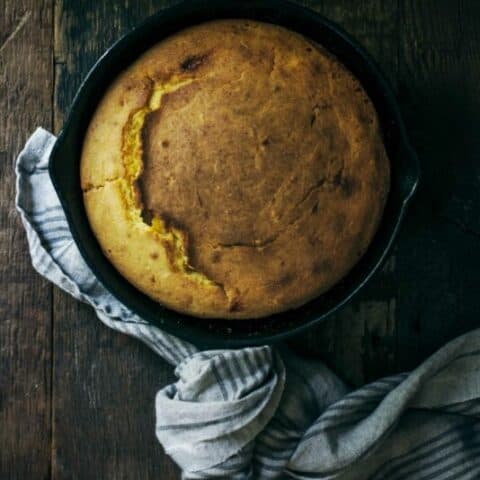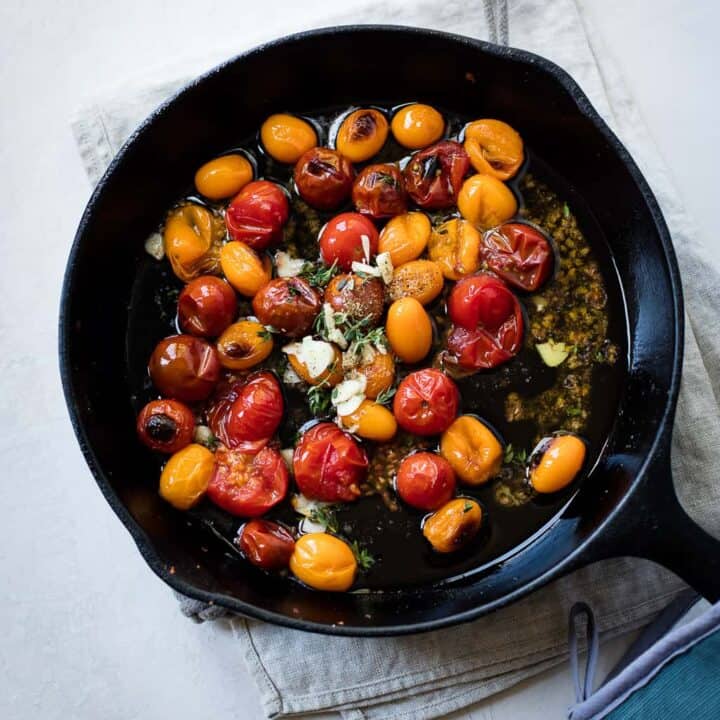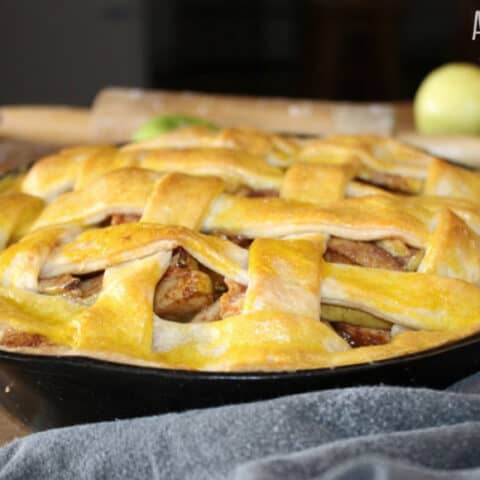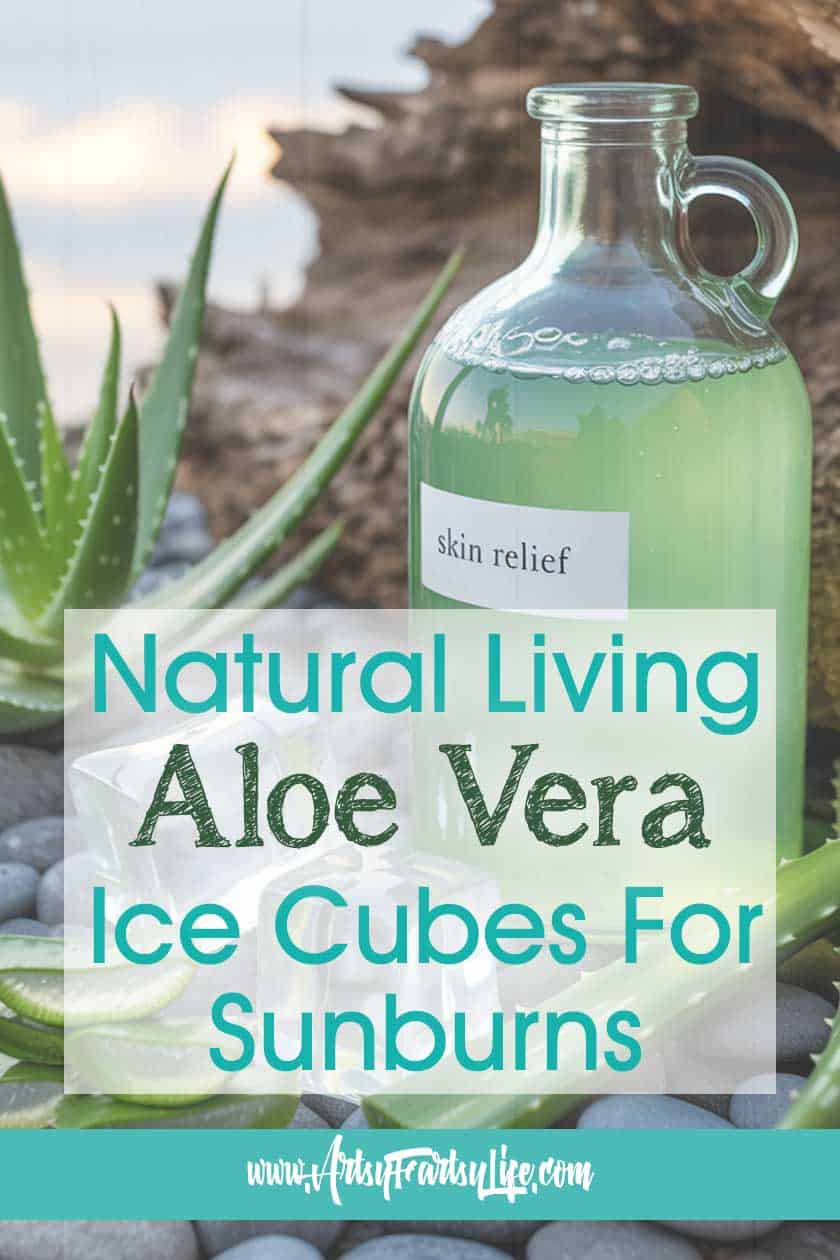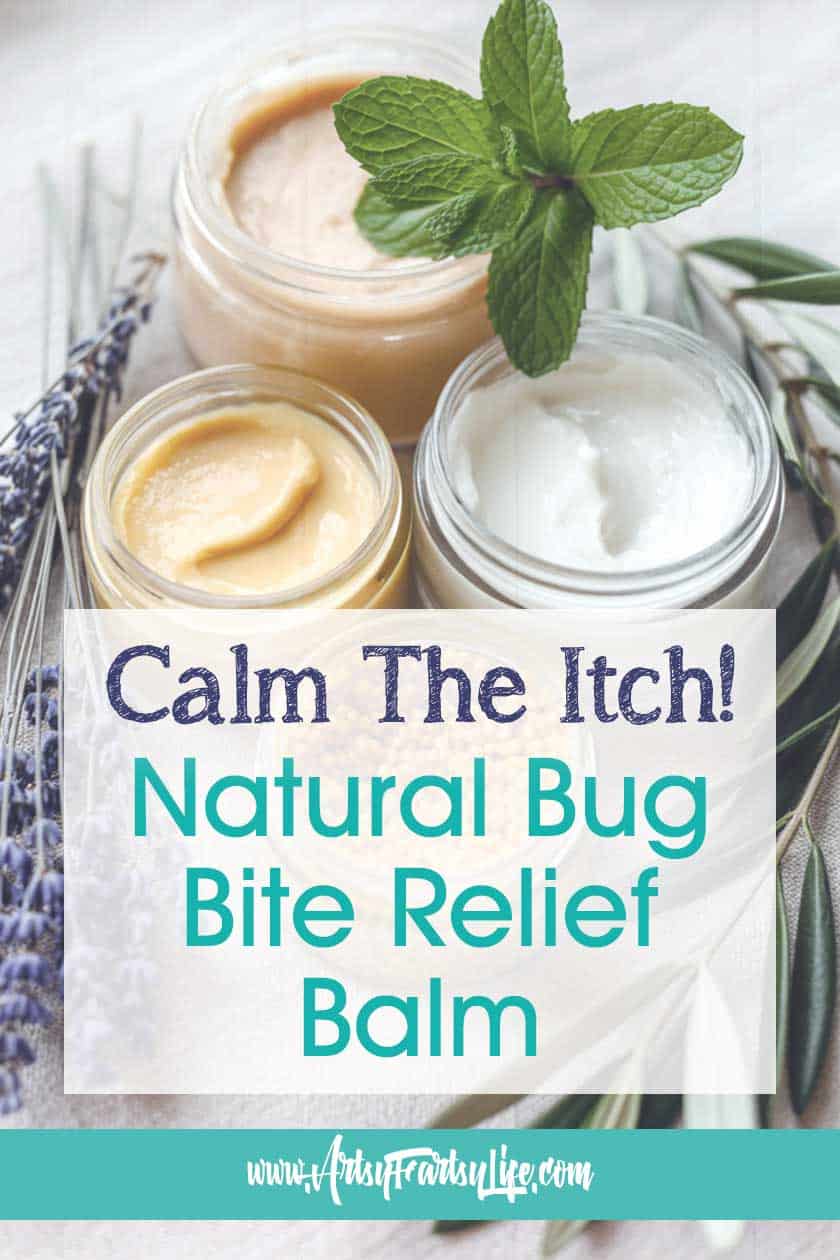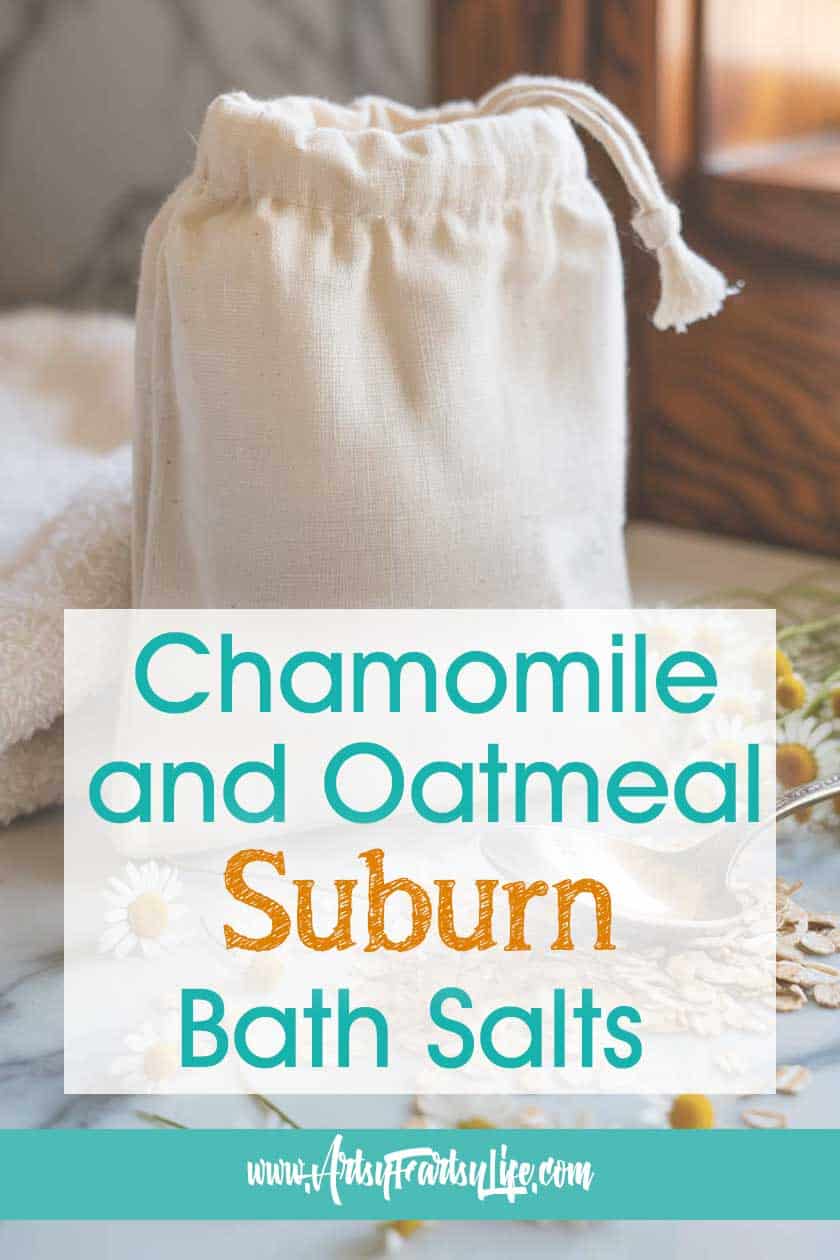Wondering how to clean your cast iron pan? Cleaning cast iron is super easy, once you know a few basics. Tips and ideas for how to clean cast iron.

Seasoned cast iron cookware was a staple in kitchens for generations, but with the advent of non-stick cookware, they fell out of favor. But as with fashion, everything old is new again and people are coming back to cast-iron.
If you’re lucky (like me) you may have inherited a set of cast-iron pans/skillets from your grandmother, if not, maybe found a set or a pan or two at a yard sale or thrift store. Maybe you got a brand new one as a gift.
However you got your cast iron pan, they need care to keep that black patina and non-stick amazement. There are a lot of myths about how to care for cast-iron. Here are some tips from those of us who use and love them.
Can you use a dishwasher for cast iron?
First, and I can’t stress this enough, NO DISHWASHER…EVER TO CLEAN A CAST IRON SKILLET!
Cleaning cast iron (while leaving the seasoning intact) requires gentle cleaning even when cooking greasy or messy food. The dishwasher will remove your pan's protective seasoning coating and could even cause rust.
Ok, now that that’s out of the way, daily use is the best way to keep them in great shape and well seasoned.
What Is Seasoning?
That shiny black patina you see on the surface of the pan? It’s layers of oils, either put on to intentionally season or from the foods being cooked, that harden and make a non-stick surface.
I know, I know, it sounds gross, but it’s not. It’s not dangerous or non-hygienic. The heat on the pots and pans keeps bacteria away. In fact, seasoning keeps bacteria from getting into the pores in the metal.
Daily Care For Your Cast Iron Skillet
Daily care is actually quite simple. If your pan is old and well seasoned, simply rinsing in hot water and using a stiff nylon brush or scouring pad (I like Dobie Pads) to remove residue.
Don’t put a very hot pan in cold water. Like hot ceramics, it can crack. Then put a very thin layer of oil on the warm pan, line it with a paper towel and store it away.
Tools For Cleaning Your Cast Iron
Some good scrubbing tools are stiff nylon brushes, kosher salt or baking soda. Don’t use steel wool as it will remove the seasoning.
Starting with the brush, get any large pieces of food out of the pan. Use warm water and give it a good scrub.
Then pour in a good amount of coarse salt (Kosher salt...table salt is too fine and will melt in the hot water) or baking soda.
Grab a paper towel and use the salt or baking soda as an abrasive. Wiping it until clean and back to the seasoned surface to prevent rust.
Can You Use Soap On Your Cast Iron Pan?
If there is a lot of grease and you really can’t stand it, a smidge of liquid dish soap and hot water will suffice.
Make sure to rinse well and then follow up with the salt and paper towel then a light coat of cooking oil.
Tips For Cleaning Your Cast Iron
Before cooking, apply vegetable oil to the cooking surface, and preheat the pan on low heat, increasing the temperature slowly.
Never marinate in cast iron. Acidic mixtures will damage the seasoning.
Clean the skillet immediately after use, while it is still hot or warm. This will prevent stuck on food and help guard against rust!
Don’t soak the pan or leave it in the sink because it may rust. I KNOW, it seems like sometimes you have to soak, but the water will make your cast iron rust and you will have to re-season it again.
Stubborn food residue may also be loosened by boiling water in the pan – just don’t use cast-iron regularly to boil water. It will eventually cause it to rust.
If you inherit or find some cast-iron and it is sticky or dusty, clean it first using the tips above for simple daily care. If it has rust spots or requires heavier scrubbing to clean it, follow the tips above and then reseason.
Dry the skillet easily with a towel on the stove over low heat.
Do not use steel wool on your cast iron pan. The only caveat to no steel wool is if the pan has any rust. Or you can use half a raw potato and a sprinkle of baking soda (yes, seriously!).
If you have to remove rust or see that the shiny is dulling, reseason the pan.
Cast iron takes longer to warm than other surfaces but retains heat remarkably well and diffuses it evenly. That also means that it will stay hot even after you turn off the burner so keep that in mind!
You can use your cast-iron on the grill! It’s great for cooking shrimp or fish or any food that may flake off and fall into the fire.
Cooking in cast iron increases the iron content in food. The longer the food is in contact with the skillet, the more it absorbs.
Cleaning Cast Iron Wrapup
A cast iron pan, pot or skillet can last a lifetime (or several lifetimes). Keeping yours in good condition really doesn't take all that long, and they are amazing to cook in!
We use our cast iron skillet on the daily and with just a little care, it has made our cooking so much better! The even heat and "crisp-ability" (I made that up!) just aren't possible in non-stick or normal pans!
Great Cast Iron Skillet Recipes
Recipes you can make using your cast iron skillet from some of our favorite bloggers!
Skillet Cornbread, the Best Cornbread Recipe - Little Figgy Food
Skillet cornbread is a favorite in our house!
Best Cast Iron Skillet Recipes For Any Day Of The Week
All different kinds of recipes to use in your cast iron skillet!
Cast Iron Grilled Zucchini Recipe
I am always trying to find ways to get my kids to eat zucchini and this looks yummy!
Skillet Apple Pie: How to Make Apple Pie in a Cast Iron Pan


